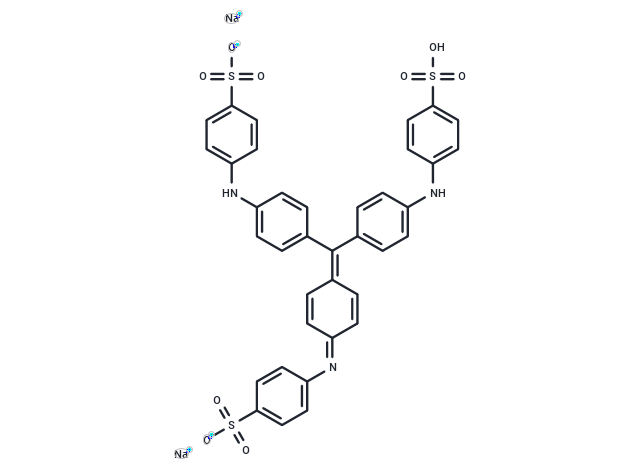Shopping Cart
Remove All Your shopping cart is currently empty
Your shopping cart is currently empty
Methyl blue is a triaminotriphenylmethane dye. It is used as an antiseptic dye in the polychrome staining method and has applications in histological and microbiological staining solutions.

| Pack Size | Price | USA Warehouse | Global Warehouse | Quantity |
|---|---|---|---|---|
| 500 mg | $29 | In Stock | In Stock |
| Description | Methyl blue is a triaminotriphenylmethane dye. It is used as an antiseptic dye in the polychrome staining method and has applications in histological and microbiological staining solutions. |
| Cell Research | Instructions 1. Solution configuration 1. Mother liquor configuration: Dissolve Methyl Blue in an appropriate solvent (such as water or PBS), usually at a concentration of 1-10mM. 2. Configuration of working liquid: When using, dilute the mother liquid with PBS/H2O/DMEM to a working liquid of a certain concentration, and dilute it according to the actual situation, such as 5μM. 1. Antibacterial staining Experimental steps: 1. Prepare the sample: Apply the bacteria or microorganism sample to be stained onto the slide, and then air-dry and fix it (such as using methanol). 2. Staining: Add Methyl Blue solution dropwise to the sample, and the staining time is usually 5-10 minutes. 3. Clean and observe: Use distilled water to clean the sample to remove excess dye. Use a microscope to observe the staining effect of bacteria or microorganisms. 2. Histological staining Experimental steps: 1. Staining sections: Immerse the tissue sections in Methyl Blue working fluid, the staining time is 5-15 minutes, and the specific time is adjusted according to the tissue type and staining intensity. 2. Clean and seal: Wash the sections with water or PBS to remove unbound dye. After the tablets were sealed with a mounting medium, use a microscope to observe the staining effect. III. Research on photodegradation of catalysts Experimental steps: 1. Reaction mixture: Mix the Methyl Blue working liquid with a catalyst (such as a photocatalyst or photosensitization catalyst). 2. Light reaction: Under light conditions (such as ultraviolet light or visible light irradiation), let the reaction mixture react for a certain period of time (usually 30 minutes to several hours). 3. Analyze the degradation effect: Use a spectrophotometer or high-performance liquid chromatography (HPLC) to monitor the photodegradation of Methyl Blue to evaluate the degradation effect of the catalyst. |
| Molecular Weight | 799.8 |
| Formula | C37H27N3Na2O9S3 |
| Cas No. | 28983-56-4 |
| Smiles | [Na+].[Na+].OS(=O)(=O)c1ccc(Nc2ccc(cc2)C(=C2C=CC(C=C2)=Nc2ccc(cc2)S([O-])(=O)=O)c2ccc(Nc3ccc(cc3)S([O-])(=O)=O)cc2)cc1 |
| Relative Density. | 1.49 g/cm3 at 20℃ |
| Storage | keep away from direct sunlight | Powder: -20°C for 3 years | In solvent: -80°C for 1 year | Shipping with blue ice/Shipping at ambient temperature. | |||||||||||||||||||||||||
| Solubility Information | H2O: 19 mg/mL (23.76 mM), Sonication is recommended. | |||||||||||||||||||||||||
Solution Preparation Table | ||||||||||||||||||||||||||
H2O
| ||||||||||||||||||||||||||
| Size | Quantity | Unit Price | Amount | Operation |
|---|

Copyright © 2015-2025 TargetMol Chemicals Inc. All Rights Reserved.